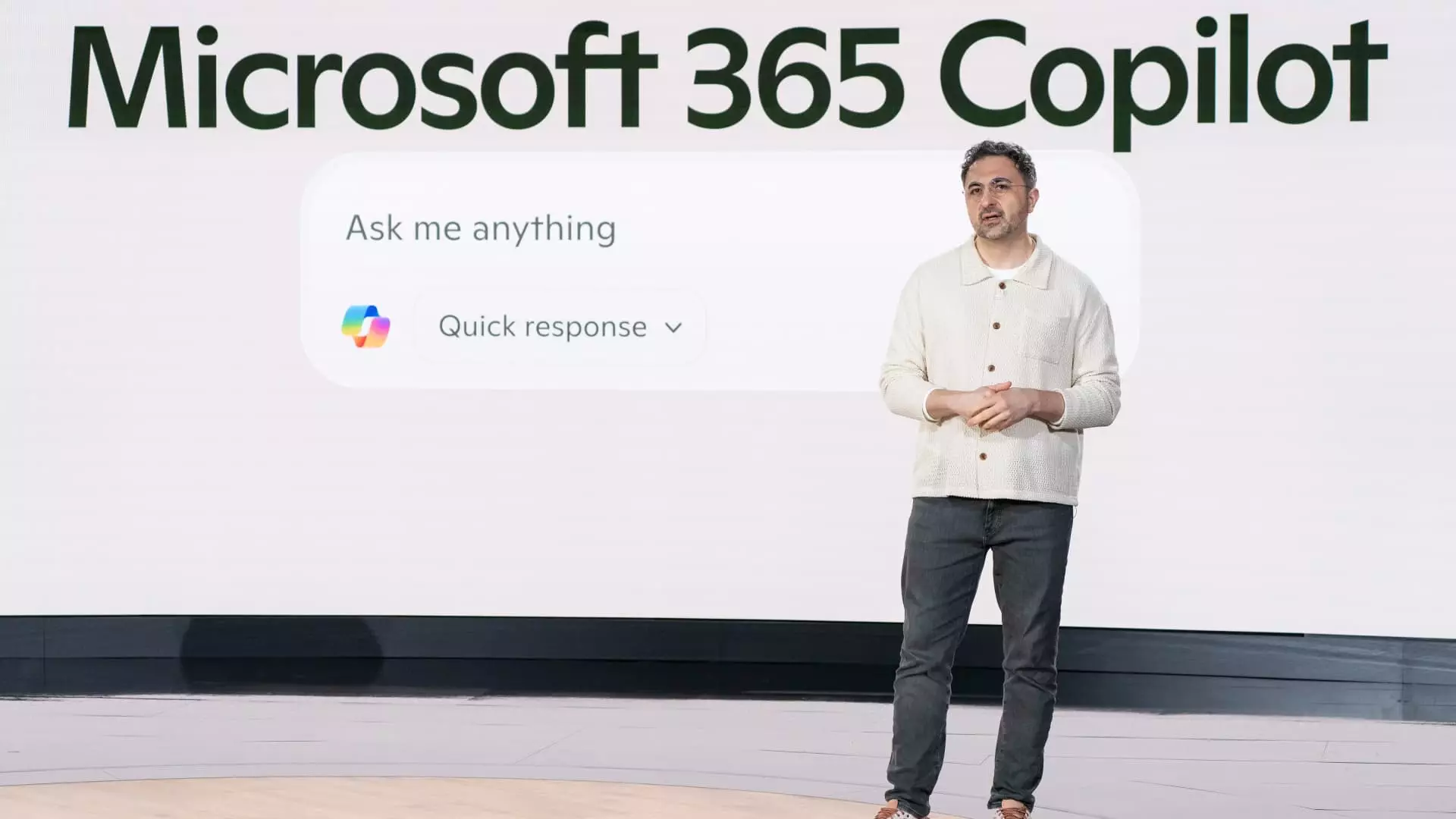In the highly competitive landscape of artificial intelligence, speed is often seen as a critical factor for success. However, Microsoft is taking a distinctly different approach by deliberately positioning itself as a follower rather than a leader in AI model development. Mustafa Suleyman, Microsoft’s CEO of AI, emphasizes that waiting for advancements can yield cost-effective solutions and refine use case focus. This method allows Microsoft to leverage innovations made by forefront researchers and developers while avoiding the heavy financial burdens associated with pioneering state-of-the-art AI models.
This approach—termed “off-frontier” by Suleyman—facilitates more targeted implementations of AI technology. By learning from and building upon the experiences of those who are willing to take risks to explore uncharted territories, Microsoft can harness mature technologies without incurring the initial investment and resource drain usually encountered with cutting-edge research. This methodical delay could be just what the doctor ordered for a world racing toward untested AI systems.
Collaborative Synergy Over Competition
The importance of partnerships in Microsoft’s AI strategy cannot be understated. By collaborating with other companies like OpenAI and CoreWeave, Microsoft has positioned itself to tap into external innovations. OpenAI, in particular, has become central to Microsoft’s offerings, enriching products like Bing and Windows with advanced AI features. Such collaborations allow Microsoft to stay competitive while mitigating the risks associated with developing proprietary technology too quickly.
Moreover, with substantial financial backing—over $13 billion invested in OpenAI—Microsoft has secured access to cutting-edge AI capabilities. Yet, recent developments hint at an increasingly competitive dynamic between these two entities. Microsoft’s recent listing of OpenAI as a competitor underscores a shift in relationship dynamics, one that could shape future AI development in unpredictable ways.
Despite these evolving tensions, Suleyman maintains that the long-term vision remains centered on cooperation, with plans for self-sufficiency in AI development through Microsoft’s internal teams. He understands that maintaining a balance between external partnerships and in-house capabilities is vital for achieving sustainable growth and innovation.
Capitalizing on Early Adopters’ Learnings
The strategic choice to wait for three to six months before deploying AI models allows Microsoft to observe market adoption and identify potential pitfalls experienced by early adopters. This is particularly pertinent in a field that is rife with trial and error. As models like OpenAI’s ChatGPT receive the lion’s share of user engagement and feedback, Microsoft’s Copilot can refine its offerings based on these insights, making necessary adjustments before rolling out similar features.
This can be viewed as a safeguard against potential missteps that can arise from the rush to deploy advanced AI systems. By allowing others to take initial risks, Microsoft can glean invaluable data that informs its own design and implementation strategies. Suleyman’s assertion that it may be more beneficial to develop tailored responses rather than chase the latest innovations highlights a pragmatic approach founded on empirical evidence and strategic planning.
The Future of Microsoft’s AI Vision
As Microsoft celebrates its 50th anniversary, the emphasis on building a strong internal AI team alongside partnerships reflects a deep-seated belief that innovation does not have to be synonymous with reckless speed. Instead of racing toward becoming the premier AI developer, Microsoft’s strategy advocates for a sustainable path, one built on thoughtful development cycles and substantial learning from industry leaders.
The ability to retain user-focused memory features in Copilot, similar to ChatGPT’s storing of user data, encapsulates this ideology perfectly. By not only keeping pace but optimizing offerings based on user interaction, Microsoft can ensure that its AI solutions are well-timed and reflective of user needs.
This measured, empirical approach may eventually pave the way for Microsoft to advance its AI capabilities confidently. While competing in a fast-moving environment, the company remains committed to sustainable development over fleeting trends, a strategy that may ultimately lead to breakthroughs that are as reliable as they are revolutionary.


Leave a Reply